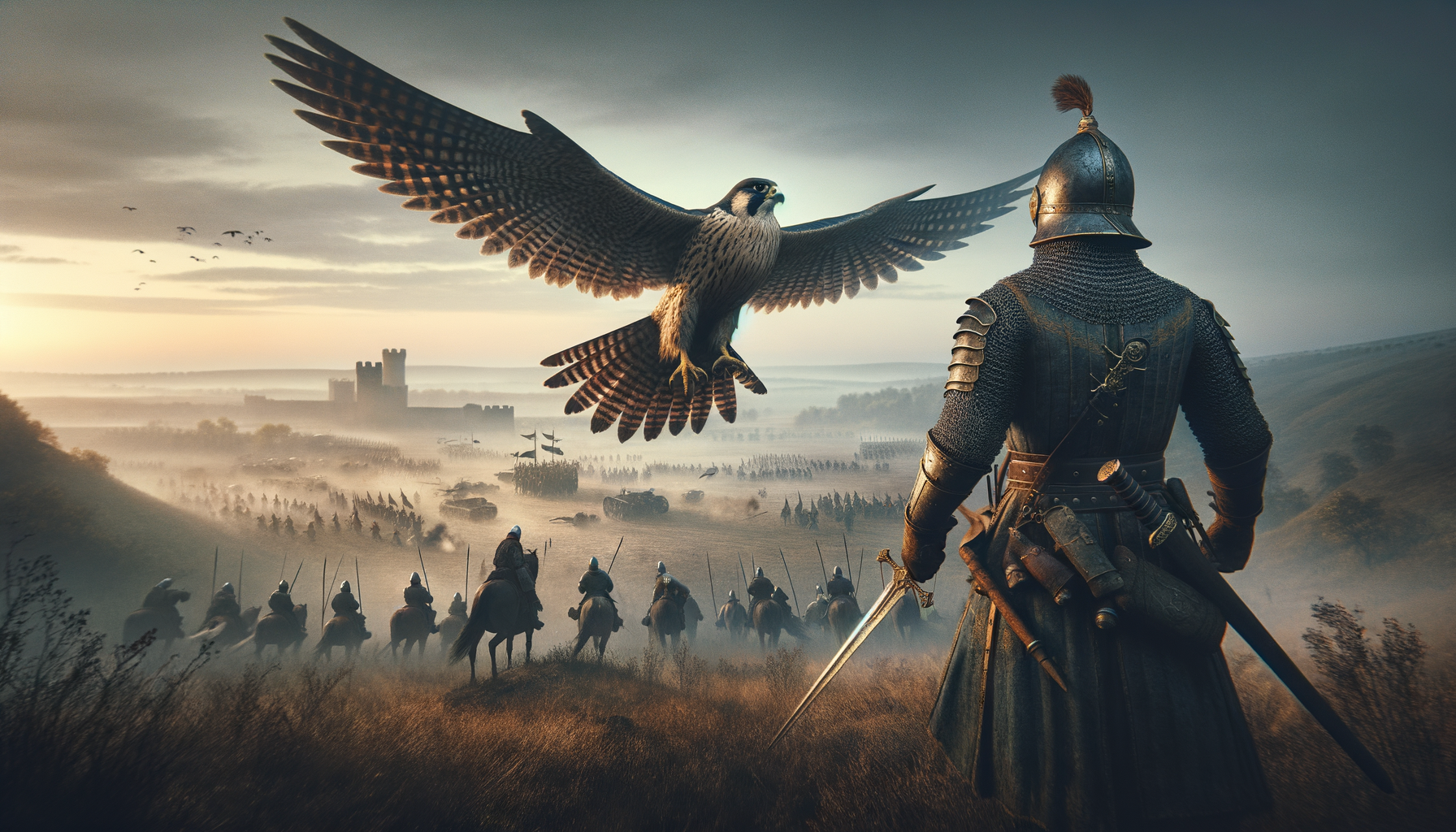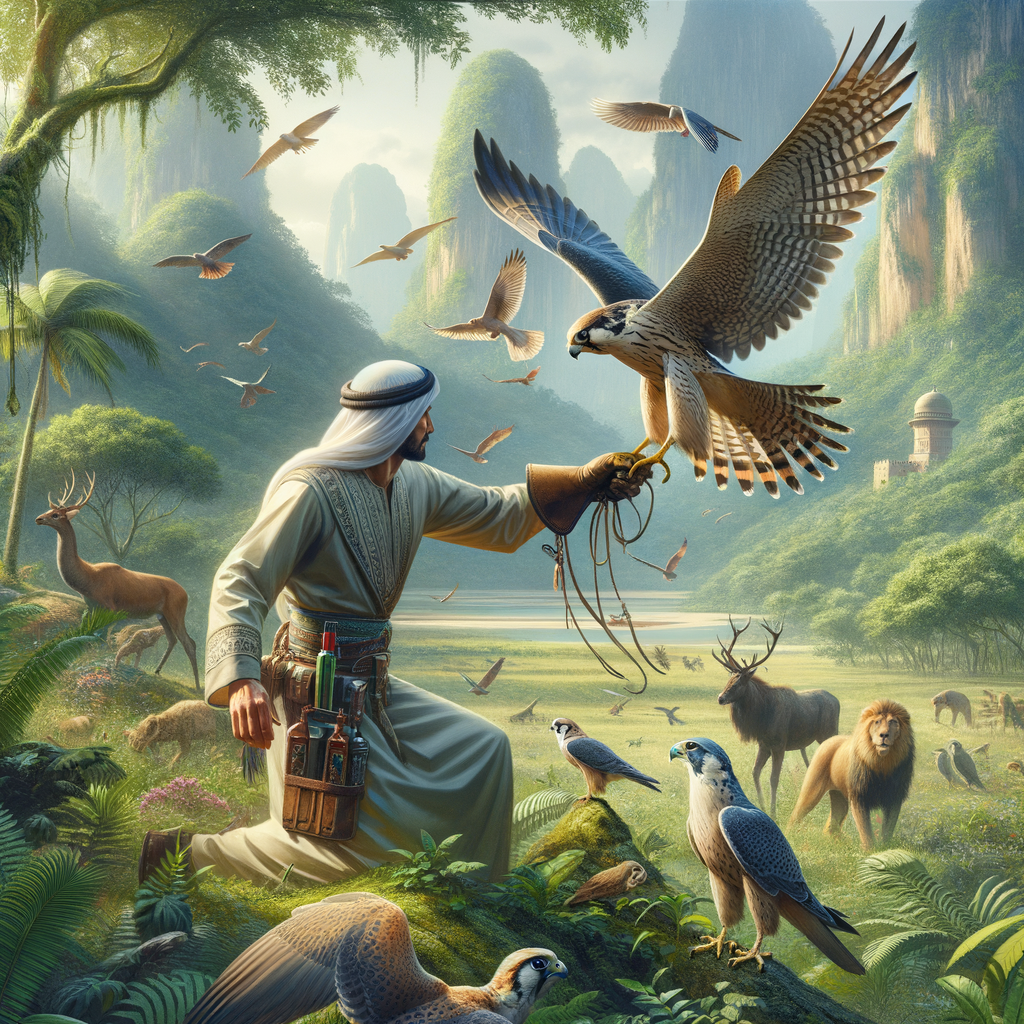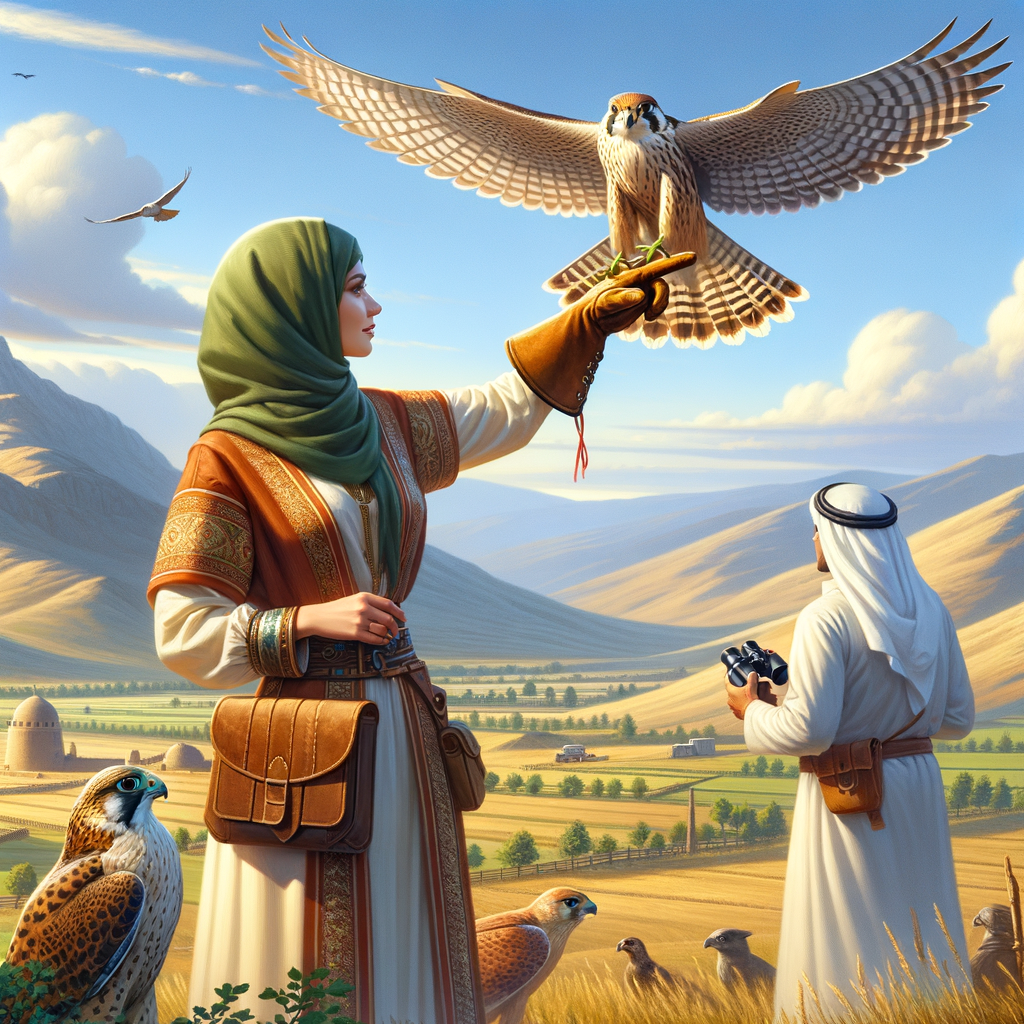Fascinating Facts about Falconry in Historical Warfare
- Falconry is an ancient hunting practice, utilizing trained birds of prey, like falcons, to hunt for food.
- This practice has been around for more than 4,000 years and started in regions like the Middle East and Asia.
- Falcons are known for their incredible speed and vision, making them excellent hunters.
- In historical times, falconry wasn’t just for hunting food; it also played a role in warfare.
- Birds of prey were trained to disrupt enemy lines by attacking messenger pigeons and unsettling horses.
- Falconry in warfare also showcased the social status and wealth of noble warriors.
- This practice required a deep bond and understanding between the falconer and the bird.
- Today, falconry is still practiced, but it’s more of a cultural and sporting activity rather than a necessity for survival.
- Learn Falconry offers unique insights and experiences into this fascinating and historical practice, bringing ancient skills to the modern world.
Discover the Epic Role of Falconry in Historical Warfare
Imagine for a moment that you’re in medieval Ireland. Picture a noble warrior, not just armored and armed with a blade, but also accompanied by a magnificent bird of prey. This isn’t just any bird; it’s a highly trained falcon, a silent scout of the skies. At Learn Falconry, we invite you to journey back in time and uncover the fascinating tale of how these incredible creatures were pivotal in battles from ages past.
Falconry, an art dating back thousands of years, had a surprising and strategic role in historical warfare. Like how an Irish chieftain might use his keen eye to survey the land for enemies, warriors of old relied on their falcons for reconnaissance and communication. These birds weren’t just pets; they were partners in survival.
Why should you keep reading? Because understanding the unique bond between humans and these majestic hunters can give us insights into the ingenuity and resourcefulness of our ancestors. Through their eyes and sharp talons, falcons shaped the course of history in ways you might never have imagined. Dive deeper with us and discover how the skies were not just a battlefield but a critical element in warfare, orchestrated by the keen senses of falcons.
Ready to unravel this compelling part of history? Read on, and let’s soar through the annals of time together!
Falcons in Historical Warfare: A Journey Through Time
Falconry is the art of training and hunting with falcons and other birds of prey. But did you know these magnificent birds were also used in warfare? Yes, falcons in warfare have a fascinating history! Let’s dive into the world of historical falconry warfare and explore how these winged warriors played a role in ancient battles.
The Role of Falcons in Historical Warfare
In ancient times, falcons were more than just hunters; they were also strategic military assets. Historical falconry warfare dates back thousands of years, with evidence of their use in conflicts found in regions from the Middle East to Europe.
One of the most notable uses of military falconry was as messengers. Falcons could be trained to deliver messages across enemy lines quickly and undetected. Their speed and ability to soar high above the battlefield made them perfect for this task. Imagine an ancient general receiving vital information delivered by a swift and loyal falcon during a crucial moment in battle. How cool is that?
Falcons and Their Unique Abilities in Military Falconry
The choice of falcon species was crucial, as each bird brought different skills to the battlefield. For example, the Peregrine Falcon is known for its incredible speed, diving at over 200 miles per hour! This made them excellent scouts, able to survey vast areas quickly and relay information back to their handlers.
Other species like the Gyrfalcon were valued for their strength and size. These mighty birds could be used to intimidate and scatter enemy troops. Falcons were not just used for their physical abilities, but also for psychological warfare. Their presence alone could strike fear into the hearts of those who faced them.
Training Falcons for Warfare
Training a falcon for military purposes was no small feat. It required extensive knowledge and advanced training techniques. Falconers had to develop a close bond with their birds, understanding their behaviors and utilizing positive reinforcement techniques. You can read more about different training methods that were employed back then and still relevant today.
Creating the right falconry equipment was also essential. This included everything from hoods to keep the falcons calm, to jesses and leashes for control during training sessions.
The Legacy of Military Falconry
The use of falcons in warfare may seem like something out of a fantasy novel, but it was very real and impactful. The techniques and skills developed during this period have influenced modern falconry practices. Today’s falconers continue to use some of these time-honored methods, refined by centuries of experience. If you’re interested in learning more about the history and evolution of falconry, check out our detailed article on the history of falconry.
Falconry’s role in historical warfare is a testament to the intelligence and versatility of these birds. It also highlights the deep bond between humans and falcons’a bond that has been respected and nurtured throughout history.
So, the next time you see a falcon soaring high in the sky, remember that these birds were once silent warriors of the ancient world, playing a crucial role in the strategies and outcomes of historical battles.
Continue exploring various aspects of falconry on our website, such as training a falcon, falconry techniques, and the role of falconry in conservation. Happy falconing!
Ancient Origins
Falconry has a rich history that dates back thousands of years. The ancient Mesopotamians practiced falconry over 4,000 years ago. Evidence suggests that these ancient cultures used birds of prey to assist in hunting and combat.
Table 1: Historical Timeline of Falconry
| Period | Key Events |
|---|---|
| Ancient Mesopotamia | First evidence of falconry practices |
| Renaissance Era | Popular among the wealthy; royal events |
| Modern Revival | Late 19th to early 20th-century comeback |
Renaissance Era
During the Renaissance, falcons and other birds of prey gained immense popularity among the wealthy. Noblemen and women cherished falconry not only for hunting but also as a prestigious hobby. For instance, the Tudor monarchs of England, like Henry VIII and Elizabeth I, were known for their love of falconry.
Artistic Depictions
Art from the Renaissance frequently highlighted falconry. Paintings and tapestries often depicted noble figures on horseback, accompanied by their trained birds. These artistic works not only showcased the beauty of the birds but also reinforced their status symbol.
Royal and Diplomatic Events
Falcons were more than just hunting companions; they were also prestigious diplomatic gifts. Rulers exchanged falcons as symbols of respect and friendship. This practice was common among European monarchs, enhancing political alliances.
Training and Care
Training a falcon is a meticulous process. It can take a year or even longer to properly train a raptor, with ongoing care required throughout the bird’s life. The thrill of falconry comes not just from successful hunts but from observing the bird’s natural hunting prowess and spending time outdoors.
Modern Revival
In the late 19th and early 20th centuries, falconry saw a resurgence despite the advent of guns. Today, falconry is practiced worldwide with dedicated clubs and societies working to preserve this ancient art.
Regulations and Licenses
Becoming a licensed falconer involves passing a rigorous exam and undergoing training. Falconers must build suitable facilities, known as mews, and adhere to state and federal laws for the care and treatment of their raptors.
Table 2: Steps to Become a Falconer
| Step | Description |
|---|---|
| Pass a written exam | 100-question test administrated by the Wildlife Department |
| Find a sponsor | Apprenticeship under a master falconer |
| Build a mews | Construct facilities for housing the birds |
| Submit an application | Apply through the state Wildlife Department |
Conservation Efforts
Falconry today also plays a role in conservation. Efforts include protecting nesting sites and monitoring migratory patterns. Programs aim to maintain healthy raptor populations and ensure these magnificent birds thrive for future generations.
Chart 1: Falconry’s Role in Raptor Conservation
|-----------------------|
| Raptor Population |
| Monitoring |
|-----------------------|
| Nesting Site |
| Protection |
|-----------------------|
| Rehabilitation |
| Programs |
|-----------------------|
These initiatives highlight the intersection of ancient traditions with modern efforts to protect wildlife. By practicing falconry, we not only preserve a historical art form but also contribute to the well-being of raptor species around the world.
Final Thoughts on the Role of Falconry in Historical Warfare
Reflecting on the rich history of falconry, it is evident that these majestic birds have played fascinating roles throughout the ages. From their ancient origins, where they were depicted in Mesopotamian art over 4,000 years ago, to their esteemed status during the Renaissance, falcons and other birds of prey have always been regarded as symbols of power, respect, and nobility.
During the Middle Ages and the Renaissance, falconry was not only a popular sport among the elite but also served as a diplomatic gesture among rulers. The art of training these birds, albeit demanding, brought immense satisfaction and was a source of prestige. Today, falconry sees a modern revival, driven by stringent training, regulations, and a focus on conservation efforts. Falconers must undergo rigorous training, comply with state and federal laws, and engage in efforts to preserve raptor populations.
Looking forward, falconry’s historical significance and continued practice underscore its enduring legacy. Whether through ancient artistic depictions or modern conservation initiatives, the connection between humans and these magnificent birds continues to captivate and inspire. Learn Falconry remains dedicated to celebrating and preserving this timeless tradition, ensuring that the legacy of these extraordinary birds endures for generations to come.



